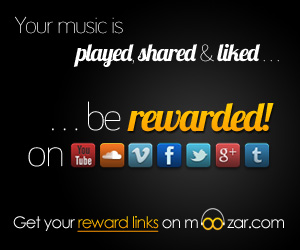By Carolyn Heneghan
The Belgian app developer La Mediatheque has developed a new genre-specific music discovery app, Beat Bang, which enables you to browse through hundreds of electronic music references. Spanning from 1988 to the present, this extensive library of music, bios, and articles lays out the massive history and evolution of this growing genre, making its information more accessible to both the biggest fan or the curious observer.
Electronic music has surged in popularity since its introduction into mainstream music scenes in the late 1980s. Though electronic music history actually extends as far back as the late 1800s, it would be nearly a century before the genre became widely known and popularized.
The basic requirement for inclusion in this genre is that the sounds are produced by electrically powered instruments, such as keyboards or synthesizers, electric guitars, drum kits, computers, and the like. Generally speaking, the trend is toward dance-based music, but many other aspects of the genre—such as deeper bass and circuit bending—have also risen in popularity.
Beat Bang aims to teach anyone interested in electronic music where the artists came from, how they were influenced, and what they have ultimately created for their audiences. The app’s interface is a series of colorful bubbles arranged in a chart based on year of release on the x-axis and BPM—or beats per minute, an important distinguishing characteristic for the electronic music genre—on the y-axis.
 The BPM ranges from 180 in red bubbles at the top of the chart to arrhythmic in bluish-purple bubbles along the bottom. It is interesting to notice the progression of certain BPM styles over the years, such as:
The BPM ranges from 180 in red bubbles at the top of the chart to arrhythmic in bluish-purple bubbles along the bottom. It is interesting to notice the progression of certain BPM styles over the years, such as:
- An increase in arrhythmic and 60-100 BPM styles from the late 80s to the present
- A steady high volume of songs in the 100-140 range throughout
- A concentration of the 140-180 BPM style in the mid- to late 90s
 To begin, simply click any of the bubbles, and you will zoom in closer to that portion of the chart, wherein any similar, larger year/genre bubbles will be displayed. Click the bubble again to see smaller album bubbles relating to that year/genre, and click once more on the album bubble to bring up all relevant information.
To begin, simply click any of the bubbles, and you will zoom in closer to that portion of the chart, wherein any similar, larger year/genre bubbles will be displayed. Click the bubble again to see smaller album bubbles relating to that year/genre, and click once more on the album bubble to bring up all relevant information.
 For example, 1998 and 148-152 BPM brings up Grooverider’s Mysteries of Funk, a short bio, playlist, and any similar artists or albums. There is an arrows icon which will bring you to a reference page on the La Mediatheque website, and there may be another icon with more info about the artist along the bottom of the bubble.
For example, 1998 and 148-152 BPM brings up Grooverider’s Mysteries of Funk, a short bio, playlist, and any similar artists or albums. There is an arrows icon which will bring you to a reference page on the La Mediatheque website, and there may be another icon with more info about the artist along the bottom of the bubble.
 Everything from an artist’s birthplace and influences to culture and socio-economic background unfold with each expanding bubble. Every subgenre from trip hop, breakbeat, and industrial to techno and house is represented.
Everything from an artist’s birthplace and influences to culture and socio-economic background unfold with each expanding bubble. Every subgenre from trip hop, breakbeat, and industrial to techno and house is represented.
 Perhaps the one drawback is that you have no idea what exactly you are clicking on with each bubble, but that’s also part of the fun of it. Whether you choose to be or not, you’ll be learning more and more about artists and albums you may have never heard of before, all around the same range of music you were searching for to begin with.
Perhaps the one drawback is that you have no idea what exactly you are clicking on with each bubble, but that’s also part of the fun of it. Whether you choose to be or not, you’ll be learning more and more about artists and albums you may have never heard of before, all around the same range of music you were searching for to begin with.
To zoom back out to the main chart, or to any other more general screen of info relating to that particular bubble, simply click the bottom circle of the zoom options on the left side of the screen. You can spend hours clicking, reading, listening, and comparing a seemingly unending treasure trove of beat-driven music and history available in the palm of your hand.
Beat Bang is available for free download from the Google Play store, and there is also a web version available (website is in French, so be sure to use a decent translator). The app is also coming soon to the iTunes store.
















[...] post: SoundCtrl – App Review: Beat Bang – Electronic Music Discovery in … jQuery(document).ready(function(){ [...]
[...] Guardians l’a classée parmi les 10 meilleures applis de la semaine. Et l’influent blog SoundCtrl y a consacré un long article (en anglais). Il en est également question sur le blog de culture et [...]
[...] they find it. To accommodate, developers have created apps dedicated to specific genres, such asBeat Bang for electronic music, and Pocket Hipster for indie rock. Then of course there are the more [...]